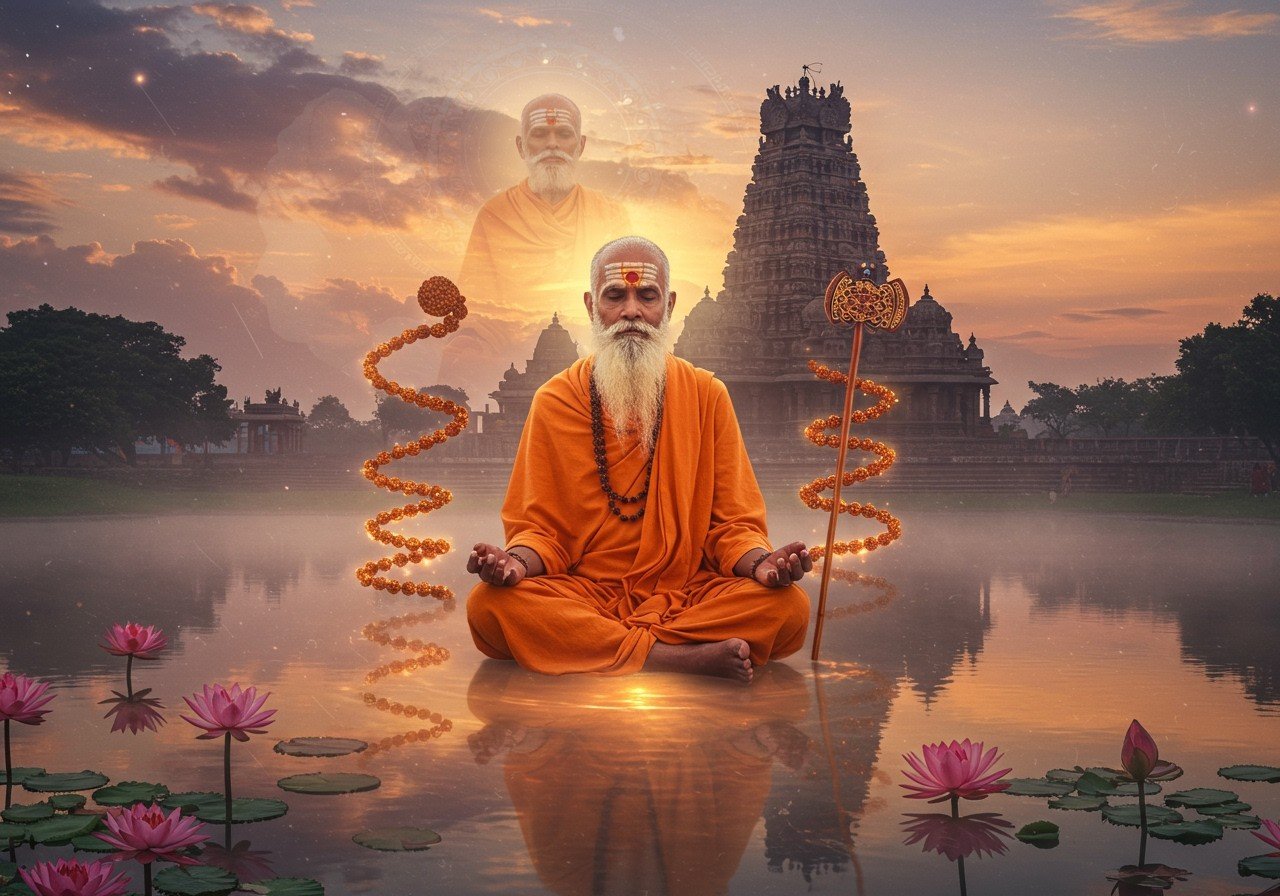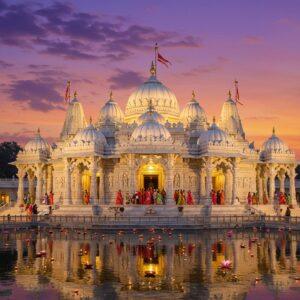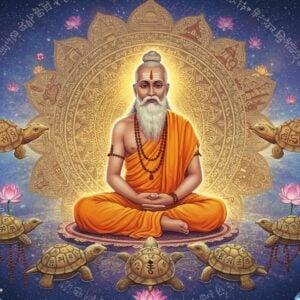Exploring the profound journey of Sannyasa in Hinduism

Understanding the role of a Sannyasi is crucial to grasping the deeper facets of Hinduism. Sannyasa, the fourth and final stage of life, emphasizes renunciation and spiritual growth. In today’s world, particularly among those who value tradition, the teachings of Sannyasa hold significant relevance. Different Hindu traditions offer diverse practices and interpretations of this path. For those seeking to deepen their understanding of Hindu spirituality, exploring Sannyasa offers invaluable insights.
Understanding the tenets of Sannyasa Dharma
Sannyasa Dharma outlines the guiding principles for a Sannyasi’s life. In Hinduism, life is divided into four stages, known as Ashramas, with Sannyasa being the final stage. This stage emphasizes relinquishing worldly possessions and societal obligations to pursue spiritual wisdom. Key elements include a vow of celibacy and dedication to meditation and self-reflection. Learn more about Dharma and Karma to enrich your understanding of this significant concept within Hinduism.
The Four Ashramas
- Brahmacharya: The student phase, dedicated to acquiring knowledge and developing discipline. This stage lays the foundation for a life grounded in wisdom and ethical conduct. It is a period of intense learning and self-discovery.
- Grihastha: The householder stage, centered around family, responsibilities, and contributing to society. This stage involves building a family, raising children, and fulfilling social obligations. It’s a period of active engagement with the world.
- Vanaprastha: The retirement stage, marking a gradual withdrawal from worldly affairs. This transition allows for increased focus on spiritual pursuits while still offering guidance to the younger generation. It’s a time for reflection and preparation for the final stage.
- Sannyasa: The stage of complete renunciation, where the focus shifts entirely to spiritual liberation. This involves detaching from material possessions and social roles to pursue self-realization and Moksha. It is the culmination of a life dedicated to spiritual growth.
In Sannyasa, the emphasis is on detachment, believed to be the pathway to spiritual enlightenment. Comprehending these principles provides insights into the journey of a Sannyasi and its significance in achieving spiritual goals.
The Path to Sannyasa: Preparation and Initiation
Preparing for Sannyasa is a progressive journey of detaching from worldly attachments. This transition requires inner fortitude and often involves guidance from a Guru. Explore the core beliefs and practices of Hinduism to understand the spiritual context of this transformative stage.
The ‘Viraja Homa’ initiation ceremony signifies formal entry into Sannyasa. The saffron robes and shaved head symbolize humility and renunciation, reminding the Sannyasi of their spiritual commitment. A Guru’s wisdom and guidance are essential in navigating this path toward enlightenment.
Life of a Sannyasi: Practices and Responsibilities
A Sannyasi’s life revolves around simplicity, discipline, and spiritual practices like meditation, yoga, and scriptural study. Discover the sacred texts of Hinduism to gain deeper insights into the wisdom that guides Sannyasis. Often living austerely and relying on alms, they practice humility and detachment. As wandering monks, they share wisdom, offer guidance, and perform rituals, upholding dharma within their communities.
Sannyasa across Hindu Traditions
Different Hindu sects have unique interpretations of Sannyasa. Advaita Vedanta emphasizes non-duality, Vaishnavism focuses on devotion to Lord Vishnu, and Shaivism centers on Lord Shiva’s teachings. Learn more about Hindu Gods and Goddesses to understand the deities revered within these different traditions. Each tradition incorporates specific rituals, teachings, and lifestyle choices, and the teachings of notable Sannyasis from these traditions continue to inspire spiritual seekers.
The Spiritual Objective: Moksha and Liberation
Moksha, liberation from the cycle of birth and death (samsara), is the ultimate goal of Sannyasa. Renunciation paves the path to spiritual freedom by overcoming desires. The concept of Atman (individual soul) merging with Brahman (universal soul) is central to achieving Moksha. Sacred texts like the Bhagavad Gita and Upanishads offer profound insights into this journey.
Poojn.in: Supporting Your Spiritual Journey
Poojn.in provides resources for those interested in learning about and honoring the Sannyasi tradition. We offer sacred texts like the Bhagavad Gita and Upanishads, meditation supplies, saffron cloth, Rudraksha malas, and puja items like the kamandalu and danda. Explore our collection of saffron vastras and other puja items to support your spiritual practices.
Embracing the Sannyasa Path
Sannyasa is a transformative journey requiring courage, dedication, and a deep longing for spiritual fulfillment. It’s a path of self-discovery, transcending worldly pursuits to embrace the eternal wisdom of Hinduism. Those called to this path embark on a journey of purpose and spiritual exploration, guided by revered Gurus and sacred texts.
FAQs on Sannyasa
What is a Sannyasi? A Sannyasi renounces worldly life for spiritual liberation, following a path of renunciation.
Why become a Sannyasi? To achieve Moksha, liberation from the cycle of birth and death, and attain spiritual enlightenment.
What is Sannyasa Dharma? The duties and practices of a Sannyasi, including simple living, meditation, and detachment.
How does one renounce? Through a formal ritual, abandoning family ties, possessions, and social identity for spiritual growth.
What’s the significance of renunciation? It’s a path to spiritual liberation, detaching from worldly distractions to realize the self.
Can anyone become a Sannyasi? Traditionally, those who’ve fulfilled householder duties, but exceptions exist for strong spiritual calls.
Key practices of a Sannyasi? Meditation, self-discipline, study of sacred texts, simple living, often wandering or residing in spiritual places.
Is Sannyasa Hinduism unique? It uniquely focuses on Moksha through detachment and self-realization, differing from other traditions’ methods and goals.
Key aspects of Sannyasa according to recent findings:
- Renunciation: Sannyasa involves renouncing material desires and prejudices, relinquishing possessions and social obligations. It signifies a shift from the material to the spiritual.
- Spiritual Pursuit: Sannyasins dedicate their lives to peaceful spiritual practices—meditation, prayer, and asceticism—seeking liberation (moksha) from samsara (cycle of birth and rebirth). This dedication is central to their life’s purpose.
- Detachment: Sannyasa is characterized by disinterest in and detachment from material life. This deep mental and spiritual detachment allows for focused meditation and prayer. It’s a key aspect of their inner transformation.
- Simple Life: Historically, Sannyasa involved renunciation, non-violence, a peaceful simple life, and spiritual pursuits. Sannyasins often wander as ascetics, relying on divine providence. This simple lifestyle supports their spiritual focus.
- Symbolism: Saffron robes symbolize detachment from worldly desires. This visible symbol reflects their inner commitment to a spiritual life. The robes serve as a constant reminder of their chosen path.
Sannyasa is the ultimate life goal in Hindu philosophy, leading to liberation from the cycle of birth and death. It’s a journey of self-discovery and realizing one’s true nature.
Stages of Sannyasa:
Sannyasa comprises internal stages of detachment and spiritual practice, including Kuticak, Bahudaka, Parivrajaka, and Paramahamsa. These involve formal renunciation ceremonies, simple living, intense meditation, scriptural study, and service to humanity.


